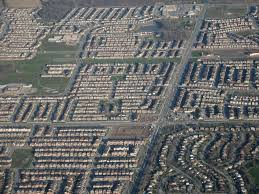
A long time ago, trains, trolleys, and light rail ruled the transportation world. Between 1860 and 1920 more trains were built in this country then any other country in world. That was until the 1920's and 30's when trains began to disappear from the landscape. Why? Historically there were several reasons.
GM Comes a-knocking...
http://en.wikipedia.org/wiki/General_Motors_streetcar_conspiracy
The first and most voracious was a targeted campaign by GM and other car/tire manufacturers. Car companies created dummy corporations, and bought out local rail companies, along with their tracks. Then a few years later they would close down the rail line, and sell off the equipment, and make a profit off of the former right-of-way. That and other factors resulted in a dramatic increase in sales of vehicles. This corruption made some politicians rich, and robbed everyday people. A court case was even brought against the car companies in the 1940's and 50's. They were found partially guilty, but ended up paying a very small fine for their actions.
Robert Moses...
http://en.wikipedia.org/wiki/Robert_Moses

This gigantic figure of New York City and it's outlying burrows was
responsible for the highway system we have today. He championed the idea
of building mega highways to accommodate traffic. Instead of sensible
planning, Moses pushed the idea of demolishing large portions of cities and urban
environments to accommodate those traveling by car. His ideas were
big... and if was up to him he would have leveled half of New York in
favor of more highways. While he was a giant, he favored vehicles over people, and progress over practicality.
This had a ripple effect. Engineers who worked with Moses went on to other posts in other places, and city planners ran with Moses' model, and began working on other cities, ramrodding massive highways through downtown areas, building ever wider roads. The national highway system gave massive amounts of money to states with new Highways construction, so of course the incentive for public rail systems all but disappeared.
Economic Change.
The 40's and 50's saw the rise of advertising. The median income rose dramatically. For the first time, people had more money to spend on transportation. Meaning they could afford cars, and not the small 4 bangers like the model t. No, the cars of the 50's and 60's were larger, heavier, and needed a lot of parking space. Add to that mix low gas prices, and the flight from the problems of the inner city.

People began using trains less and less. So Sub-urban sprawl kicked in, placing people further and further from the city center, in massive outlying developments. 100 percent dependent upon cars. This system seemed to work well.. for a while...
What changed?

Congestion... traffic jams... construction...more congestion. Roads have become over stuffed, over traveled, and under maintained. Most major cities in the US suffer from a growing traffic nightmare. The fact is traffic has become unbearable in certain cities. A city the
size of Orlando should not have the traffic of a city like New York.
However the lack of travel options only encourages more traffic jams.
Building more road's alone creates an unsustainable model. In a state like Florida, growing out means destroying the local environment, deforestation, and a drop in property values. Gas dependence made certain countries rich, and rising gas prices makes it increasingly difficult to make ends meet for everyone.
http://www.theatlantic.com/business/archive/2013/02/the-american-commuter-spends-38-hours-a-year-stuck-in-traffic/272905/
But then engineers took a look back. Trains allowed for maximization of transit routes. You can fit thousands of commuters through a train artery for every dozen cars. Allowing consumers a variety of commute options lessens' traffic, increases density and reduces the strain on already strained roads. Ultimately they help to move more people faster and for less, and help to build a tax base. People move to where the stations are, and businesses follow them.
That's why local commuter rail makes sense... and why its resurrection in Central Florida just might work.